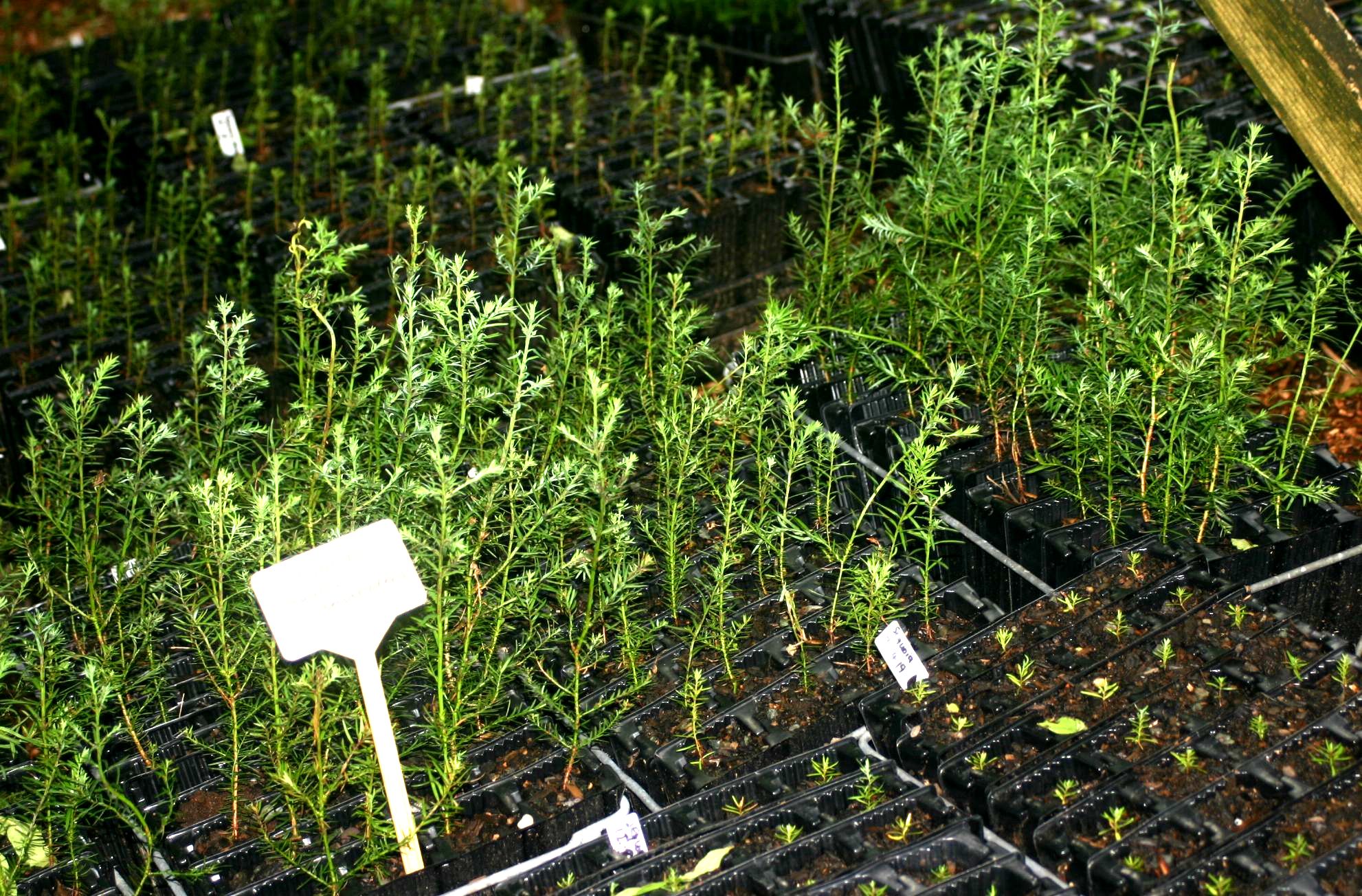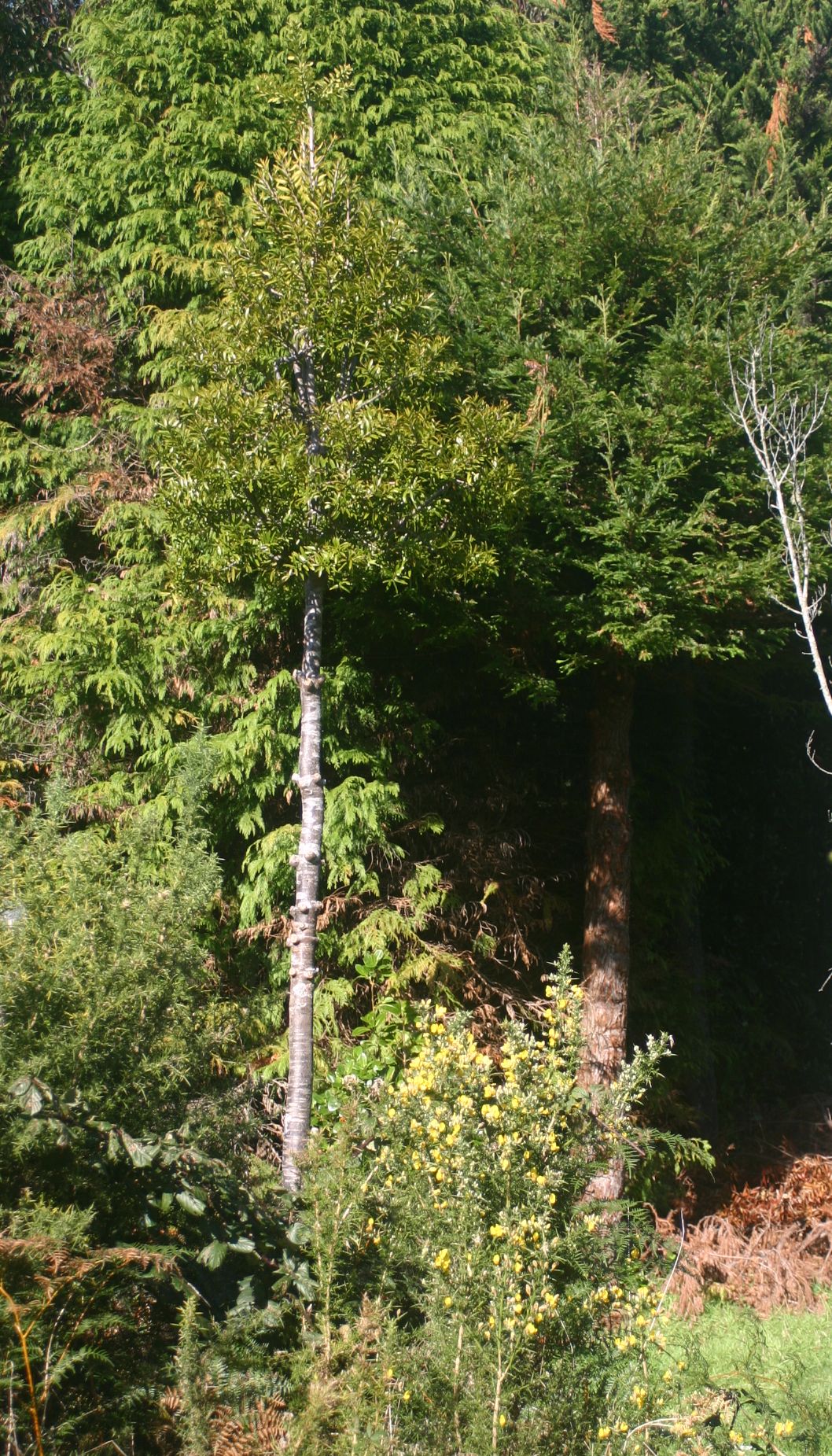Dial-a-Tree Virtual Tree Nursery
Tree Stuff Blog
Redwoods for Erosion control and Fire Resistance - by Ben Gaia
www.dialatree.co.nz
The Roots Grow Back

Baby redwood trees 1 year old, nearly big enough to plant.
Worried about Pines? Plant Redwoods instead, by Ben Gaia,
www.dialatree.co.nz
A lot of people are rightly worried about the fire risk around large areas of radiata pine forest. Redwood trees have evolved to adapt to wildfires. Their thick, spongey fire retardant bark not only makes fires less likely to spread as fast in a redwood forest, but also protects the growing trees themselves from destruction by a fire. They are more likely to survive after a fire has passed through and continue to grow without the huge costs of bulldozing and replanting, and loss of years of investment. Even the timber itself is fire retardant, and this is one reason it was used in California for shingle roofing and house wall cladding. It also splits nicely with an axe. Unfortunately it doesn't make great firewood though.
In the rural paper Canterbury Farming in 2006, Andy McCord wrote about using redwoods to stabilise erosion prone hill country in the eastern North Island and elsewhere. This is a great idea and it solves a whole lot of problems people are bringing up, as large areas are going back into pine trees in response to the NZ Governments "Billion Trees" initiative. Redwood timber is similar to radiata although it takes longer to grow. From the point of view of "carbon farming" though, this longer growth time is an advantage because more carbon is removed from the atmosphere over a longer period.
But the main advantage is this. When felled, redwoods can coppice back from the cut stump like willows or poplars. So carbon is removed and kept locked in the logs and timber. Then the trees replant themselves automatically by growing back from their roots. Carbon sequestration continues with no net loss, just like in a permanent native forest. This also combats hillside erosion by leaving the roots in the ground to hold back the soil from washing away when the canopy cover is cleared, just like willows and poplars do. The roots form a crazy mat which also makes the trees less prone to wind throw.
.
Here is a young Sequoia sempervirens tree, pruned to 4 metres.It is fat like a lollipop, planted nineteen years ago on West Coast sand, sheltered but also exposed to coastal winds. Moisture is vital. Redwood is from the Pacific North West Coast of California and Oregon, so it likes mild, wet and misty climates

19 year old baby redwood and its kauri buddy.
The NZ Farm Forestry Association website has great information pages about alternative timber species for your farm or forest planting. Check out the redwoods link at the Farm Forestry Specialty Timber Market
Back to dialatree www.dialatree.co.nz

